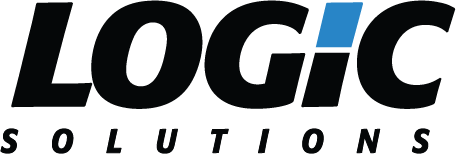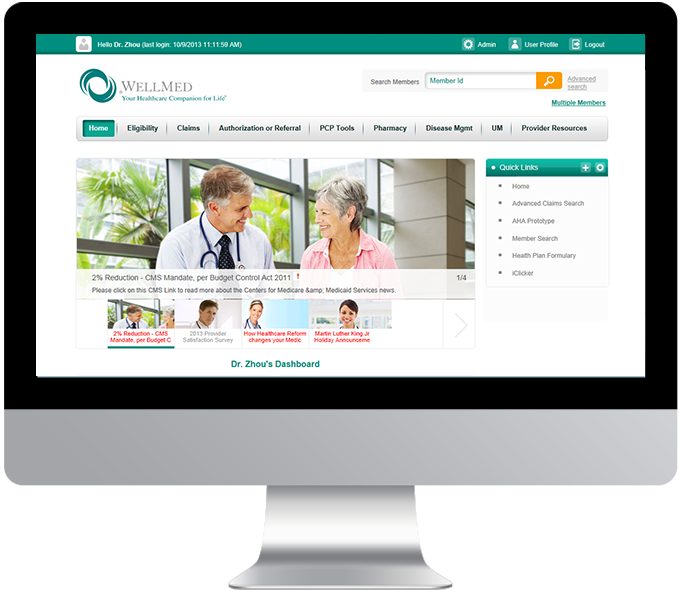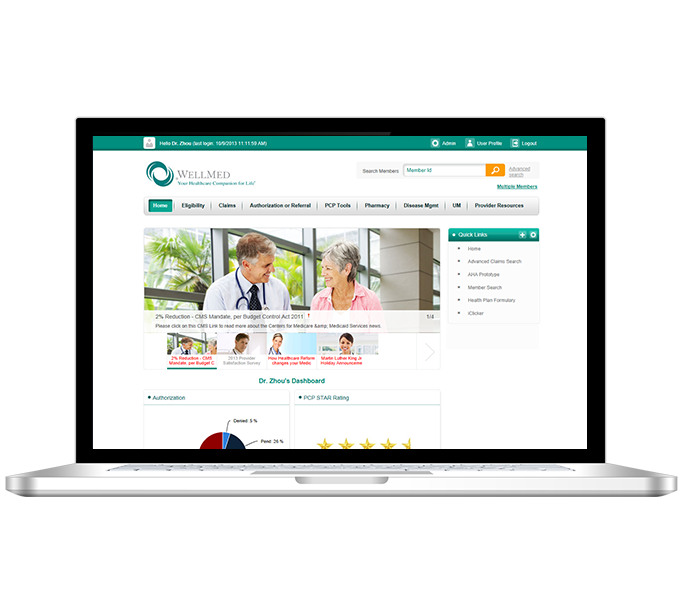WELLMED MEDICAL GROUP
WEB APP | PROVIDER PORTAL | TECHNICAL STAFFING
CLIENT BACKGROUND
For an elderly patient or one with a history of medical problems, it is often difficult for doctors to efficiently access and update patient information, let alone share new developments with the patient’s other medical professionals. This is especially true for senior citizens or patients with disabilities, as they tend to see more doctors than the average healthy young adult. This is one of the issues the health care providers has been trying to tackle for years, and WellMed decided to come up with a solution when they were examining ways to provide better services and options to their patients.
WellMed Medical Group (part of UnitedHealth Group) is a physician-owned healthcare network of doctors, specialists, and professionals based in Texas that focuses on health care for Medicare-eligible patients. Founded in 1990, they started off as one clinic in Texas and quickly grew across Texas and Florida. WellMed is recognized as an industry-leader in medical-risk management, highly-effective disease management, chronic care programs, healthcare delivery services, and more. Their mission is to proactively keep their patients healthy by positively affecting their quality of life instead of responding to symptoms.
Today, their network covers 315,000+ older adults with over 12,000 doctors’ offices in Texas and Florida. Wellmed believes that patients come first and nine out of ten patients would recommend their friends and family members to WellMed. It has earned the Gold Seal of Approval® for Ambulatory Health Care from The Joint Commission, the nation’s oldest and largest standards-setting and accrediting health care body.
THE PROBLEM
To manage all of the clinics and the doctors under WellMed’s umbrella, the healthcare organization created a centralized provider system that offers services to doctors to help them better provide for WellMed’s members and patients. However, WellMed was growing so fast and acquiring so many other healthcare companies that their internal IT department didn’t have the resources to keep maintaining the centralized system. Once Wellmed acquired a healthcare company, they would also acquire that company’s management system. All of these different companies used different systems with different logins, which made unification a difficult process. Additionally, WellMed’s medical professionals had difficulty finding patient information in the multiple systems across their network of practices. So WellMed turned to Logic for assistance.
WellMed’s centralized provider system is a web app called the electronic provider resource gateway (ePRG). Before Logic’s team became an integral part of WellMed, doctors were able to use ePRG to
- look up patient information, date of the last appointment, health and medication info, lab results, and recently visited specialists
- view their insurance claim info for reimbursements
- view a rating score to see how patients think they’re doing
- refer patients to other doctors
Other ePRG features include:
- Customer Support: 24/7 customer support for patients
- Utilization Management System: manages and sanctions all referrals and visits to non-regular clinics
- Pharmacy Formulation System: tracks and manages patient medical information to ensure it is covered by the patient’s insurance plan.
All in all, ePRG was a comprehensive system with many functions, but WellMed didn’t have enough IT personnel to keep maintaining it. Many of these functions also required a manual and lengthy process by paperwork that WellMed was hoping to change.
PROJECT OVERVIEW
- Improved and enhanced electronic provider resource gateway (ePRG) portal
- Digitized attestation, referral, and rating processes
- Staffed a dedicated IT team to support Wellmed’s Integration Service
TECHNOLOGIES
.Net, MS SQL, C#
THE SOLUTION
WellMed brought Logic onboard to assist with maintaining and gradually improving their ePRG web app. The ePRG was built on .Net with a SQL database. Logic was brought in toward the end of 2009 and continues to work with WellMed today. We currently have 7 developers working on the ePRG, and 9 more on WellMed’s Integration Service team (which will be explained below).
Our solution to WellMed’s needs was to become their IT team. Logic put together an ePRG team and re-architected, upgraded, and enhanced their current system; digitized the attestation, referral, and previously manual rating processes; and completed two rounds of UI improvements – once in 2011 and once in 2013. The next big step for WellMed is to make their system mobile. The Integration Service (IS) team helps WellMed manage and distribute data between third-party vendors, clinics, and WellMed itself.
Attestation System
One of the largest changes Logic made to WellMed’s system was implementing the new Attestation feature. For those unfamiliar, attestation is the process of doctors checking up and updating patient’s medical files with developments in the patient’s medical condition and symptoms. For example, when printed, the attestation would show a doctor that a patient has a medical condition and the symptoms associated with that condition. The doctor could then schedule an appointment with the patient to check up on them and the state of the symptoms. During the appointment, the doctor can check to see if the symptoms are still present, have worsened, or have absolved. After the appointment, doctors can attach progress notes and comments on the symptoms, fax the attestation document to WellMed’s IT team, and IT can compile the information into their system and update the patient’s medical file. Doctors can finally then ask to be reimbursed for this attestation process under the Affordable Care Act because the ACA encourages and emphasizes preventative care. If a doctor that is seeing a patient regularly can prevent the patient from becoming sick (or sicker), doctors can be compensated for more.
Attestation was incredibly important to WellMed because
- patients regularly get checkups and are attended to,
- it is an opportunity for doctors to receive some extra money,
- the doctor’s emphasis on preventative care is reinforced.
Attestation was not a new process to WellMed’s medical professionals but wasn’t a part of their digital ePRG system. Instead, it was an entirely manual process with loads of paperwork. Logic helped to convert it into a digital feature and incorporate it into the ePRG. In its new format, doctors can access patient information and submit updates digitally. This decreased the number of overall errors. WellMed’s IT team didn’t have to decode poor handwriting, there were fewer transcription errors when the IT team manually typed up the report into the computer, and doctors didn’t have to struggle with faxing errors anymore. This saved clinics hours of time and effort not having to deal with loads of paperwork.
Referral Process
The next ePRG feature that got a major overhaul was the Referral Process. Previously, the referral and feedback process was all manual and had a very slow turnaround time. With it now digitized, it was integrated with the insurance database and rules could be set up to check if a referred doctor, clinic, or procedure, is covered by the patient’s insurance plan. The previous process of manually faxing in all referrals was also eliminated. Doctors can digitally submit a referral and, instead of waiting days for a response, can immediately see if a referred doctor is covered by insurance. There’s no waiting time anymore.
Rating and Scoring Reports
In the late 2000s, the Affordable Care Act started to place greater emphasis on preventative care instead of reactive care. If a doctor could proactively prevent their patients from getting sick and decrease the likelihood of a patient being sent to the emergency room for reactive medical treatment (and provide excellent care while they’re at it), they would be compensated by the government. The ACA allowed for multiple ways for patients to rate or score a doctor based on their performance; from this score, doctors could receive more or fewer reimbursements from the government.
WellMed’s previous scoring reports were manually snail-mailed to doctors. Before, only a small group of medical professionals could view their scores electronically. This process was, as predicted, slow and subject to mailing or delivery errors. Logic developed a new digitized scoring function where all doctors could now have access to their scores online, instantly see their scores, receive updates. This not only reduced the number of human errors involved in delivering the scores, it also saved lots of paperwork.
Integrated Services (IS) Team
The IS team acts as a bridge between vendors, payers, clinics, local care delivery organizations (LCDO), and the centers for Medicare and Medicaid services’ CMS systems (in other words, all third-party systems), and WellMed itself. Logic integrated all of these third-parties’ clinical backend systems with WellMed’s Enterprise Data Warehouse (EDW). Logic and WellMed’s combined IS team helps to manage the flow and transference of data between all of them. It might not sound like a glamorous job, but it is absolutely vital to WellMed’s business in ensuring that all medical information make it securely to their final destination. Logic added a number of developers to WellMed’s IS team and, as WellMed’s business grew, so did the number of developers helping to move this data.
Logic’s IS team also helped to integrate WellMed’s EDW with over 14 organization, including
- Amerigroup of Texas
- Bravo and HealthSpring
- Care 1st of Texas
- Cigna Bravo and HealthSpring
- Citrus Health Plan
- Humana of Texas
- Physicians Health Choice
- United Greater Texas
- United Healthcare of Florida
- United of Dallas Ft. Worth
- United of Florida
- United of Greater Texas
- United of Texas
- WellCare of Florida
THE RESULTS
Changes made by Logic in ePRG and other WellMed applications and systems enabled WellMed to serve more patients and doctors with less staff. They also integrated information from various sources and subjects and presented in an easy to understand format to users with permission. Logic’s work on WellMed’s ePRG system made the healthcare organization so successful that they were acquired by UnitedHealth Group.
“I know first-hand the quality of the resources that Logic Solutions has assigned to my efforts in particular, and I am extremely pleased.” – Director, Applications Support & Quality Assurance, WellMed Medical Management


